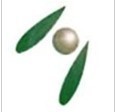
The annatto seed contains 4.5-5.5% pigments, which consists of 70-80% bixin..
Product Details:
X
Product Description
The annatto seed contains 4.5-5.5% pigments, which consists of 70-80% bixin..As a food additive, annatto has the E number E160b. The fat soluble part of the crude extract is called bixin, the water soluble part is called norbixin, and both share the same E number as annatto.
In the United States, annatto extract is listed as a color additive exempt from certification (Title 21 Code of Federal Regulations part 73) and is commonly considered to be a natural color. The yellowish orange color is produced by the compounds bixin and norbixin, which are classified as xanthophylls, a type of carotenoid. However, unlike beta-carotene, another well-known carotenoid, they do not have the correct chemical structures to be vitamin A precursors. The more norbixin in an annatto color, the more yellow it is; a higher level of bixin gives it a more reddish shade. Unless an acid-proof version is used, it takes on a pink shade at low pH.
Cheddar cheese is often coloured and even as early as 1860 the real reason for this was unclear: Englirsh cheesemaker Joseph Harding stated "to the cheese consumers of London who prefer an adulterated food to that which is pure I have to announce an improvement in the annatto with which they compel the cheesemakers to colour the cheese".
One theory is that cheeses that were excessively fatty or rich turned a somewhat yellow color, annatto was added to make cheaper cheeses appear to have more fat content, which would bring a higher price.
Enter Buying Requirement Details
Other Products in 'Herbal Extracts' category
 |
A & Z Group Co.,Ltd
All Rights Reserved.(Terms of Use) Developed and Managed by Infocom Network Private Limited. |
 English
English Spanish
Spanish French
French German
German Italian
Italian Chinese (Simplified)
Chinese (Simplified) Japanese
Japanese Korean
Korean Arabic
Arabic Portuguese
Portuguese





 Send Inquiry
Send Inquiry